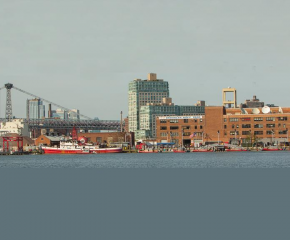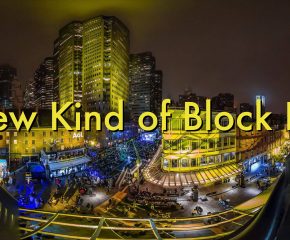Its name, French phrase sans souci, translates as "without concerns". In Potsdam. Sanssouci Palace, Potsdam, Germany. Share and bring new players to the game! But Bojan Kveder was determined to fulfil a long-held dream and see the place for himself. During a tour of the Palace, you will learn interesting facts and countless anecdotes about the "Old Fitz" and its era of enlightened absolutism . Price: € 60.00 Reduced: € 40.00. sanssouci+ Ticket and sanssouci+ Family Ticket are valid for one visit to all of the SPSG palaces in Potsdam, including Sanssouci Palace, on a single day (special exhibitions are excluded such as exhibition Potsdam Conference 1945, Cecilienhof Country House, 1 April to 31 October . Sanssouci Palace Price: 12 EUR. Tours are provided to explore the palace and would cost around 12 euros for entrance fees. Frederick II "Frederick the Great" (January 24, 1712—August 17, 1786) owes much of his success to his father for leaving the Prussian Empire to him at the height of its military power. Potsdam Castle Night in Sanssouci Park. The name Sanssouci - without a care - should be understood as both the primary wish and leitmotif of the king, because this was the place where he most preferred to retreat in the company of his dogs. Since 1738 there has been a windmill on this hill. We have put together all the important questions about Sanssouci Palace for you on this page. Western Europe quiz. Too difficult. Sanssouci Palace The stunning Sanssouci palace in Postsdam, near Berlin, was built by Emperor Frederick II, who is usually referred to as Frederick the Great. This idea resulted in the construction of one of the most fascinating palaces in the world, and in this post, you'll discover our Top 8 list of facts about Sanssouci Palace.. 1. Another of Frederick's projects in Potsdam was the New Palace, with 200 rooms, plus the buildings for domestics, called Communs. Frederick died on 17 August 1786 in Sanssouci Palace, and before his death in the instructions he left he wanted his body to be buried in a crypt he had . Built-in the 1740s as a summer retreat for the Prussian king Frederick the Great, the palace comprises ten meticulously decorated rooms. References One of the unique features is the terraced . March 7, 2019. During the Asian Revolution, the now Milot town was a French plantation under . Eine kurze Urlaubsrunde durch den Schloßpark Sanssouci. No need to register, buy now! SANSSOUCI PALACE, POTSDAM, GERMANY: Constructed between 1745 and 1747, the Sanssouci Palace was built for Friedrich the Great as his summer retreat. It was built by King Henry the first which became his royal residence together with his wife and their two daughters. 1. The Versailles of Germany . Selected as the most interesting among Western Europe related questions in. Where is Sanssouci Palace located? The sans-Souci Palace was constructed between 1810 and 1813 and is situated in the town of Milot in Nord Department, Haiti. If a question is missing, please write to us. Because of the beautiful views offered in the park Frederick the Great designed Sanssouci Palace as his summer retreat where he would go to unwind and relax from the pressures of royal life. Sans-Souci Palace shares a UNESCO World Heritage Site with the Citadelle Laferrière. Introduction. Just as many flock from Paris to Versailles each year to experience the French palace's opulence and grandeur, Potsdam's impressive Sanssouci Palace has landed the city on many tourists' bucket lists. Criterion (ii): Potsdam-Sanssouci - frequently called the "Prussian Versailles" - is the crystallization of a great number of influences from Italy, England, Flanders, Paris, and Dresden. And so, Sanssouci was born. Pass the Church of Peace in the palace grounds of Sanssouci Park, which . Despite Frederick the Great's wish to be buried in Sanssouci in 1786, his wish only came true in 1991, 205 years after his death. Learn how Frederick expanded the city magnificently during his time as a patron of the arts and where he is buried in Sanssouci. Travel video about destination Sanssouci in Germany.Located in North Germany close to Berlin, Potsdam is a city of gardens and castles.The Prussian kings set. Most people visit Sanssouci in Potsdam, Germany, mistakingly believing Sanssouci Palace to be the highlight of this world-renowned park. Frederick built two key residences here, Sanssouci Palace and Neues Palais, at opposite ends of the expansive grounds here. The original site included Sanssouci, Neuer Garten, Babelsberg, Glienicke and Pfaueninsel. [mappress mapid="5″] The rococo splendour of Schloss Sanssouci was Frederick the Great's answer to Versailles. Sanssouci Park is a large park in Potsdam, Germany, that surrounds Sanssouci Palace. Opening hours: Tue - Sun: 10am - 4:30pm (closed on Mon) Price: From 21 USD The Orangery Palace at Sanssouci was the last and largest palace building constructed in Sanssouci Park. Today, Sanssouci Palace is a unique treasure of European history and it along with the other palaces in Potsdam are visited by over 2 million visitors every year. Photo:DPA. Combined with the Orangerieschloss (Orangery), the Neues Palais (New Palace), Schloss Charlottenhof (Charlottenhof Palace), and the 500 . The Palaces and Parks of Potsdam, which cover about 500 hectares of parkland and encompass 150 buildings dating from 1730 to 1916, were awarded UNESCO World Heritage status back in 1990. Western Europe. And so, Sanssouci was born. Very well maintained. Marvel at the Rococo style at Sanssouci Palace, the former residence of Frederick the Great, and uncover the hidden secrets of its architecture. In 1810, the King was decided to start uniquely designed construction of the palace in Milot, Nord Department. Sanssouci Palace has been drawing in Berlin tourists for years, causing many to dub its surrounding town, Potsdam, as 'Berlin's Versailles'. Sanssouci Palace, Potsdam. Sanssouci Palace Address: Maulbeerallee, 14469 Potsdam, Germany, 14469. Before the construction of Sans-Souci, Milot was a French plantation. It is located on top of a terraced vineyard, known as the Weinberg (wine mountain). The Night of the Palaces Sanssouci Palace with its 290ha park area is the oldest part of the Potsdam cultural landscape that has flourished over a period of four centuries and was created by numerous artists. Sanssouci is a historical building in Potsdam, near Berlin.Built by Prussian King Frederick the Great as his summer palace, it is often counted among the German rivals of Versailles.While Sanssouci is in the more intimate Rococo style and is far smaller than its French Baroque counterpart, it, too, is notable for the numerous temples and follies in the surrounding park. Haiti's Sans-Souci Palace, once considered the Versailles of the Caribbean, is seldom visited. Despite being known as a brilliant commander, his first battle was an embarrassment. We have put together all the important questions about Sanssouci Palace for you on this page. The summer palace and private refuge for the King of Prussia, Frederick the Great, Sanssouci is located in Potsdam, a city on the border of Berlin. Sanssouci Palace was listed as a World Cultural Heritage in 1990. Very uninteresting. 2. Sanssouci Palace is located in Potsdam, some 20 miles (32 kilometers) southwest of Berlin. Address: Maulbeerallee, 14469 Potsdam, Germany. Sanssouci Palace is located in Park Sanssouci in Potsdam, in Maulbeerallee, 14469 Potsdam. Built in 1745, Sanssouci Palace was designed in the playful Rococo style as per Frederick the Great's wishes, since he wanted the palace to be an escape from the pomp of Berlin. Though his instructions were to bury him on the vineyard terrace of Sanssouci beside his greyhounds, his nephew and successor Frederick William II buried him in the Potsdam Garrison Church. 1. Ninjai. Sanssouci is the summer palace of Frederick the Great, King of Prussia, built between 1745 and 1747 in Potsdam. It's like a palace that you see in romantic period movies. Although Sanssouci Palace is the most well-known portion of this World Heritage Site, the list includes over 500 hectares of parks and 150 buildings, all constructed between 1730-1916. Drag images here or select from your computer. Annual Pass for the Palaces. Over the years, several other buildings were added to the grounds of the Sanssouci park. TICKETS. The concept of a singular nation-state only became a reality for Germany in 1871 when the myriad German states were unified into the Deutsches Reich (German Empire) under Prussian leadership. Sans-Souci Palace, which translates to 'the Worry-Free Palace', dates back to . Although he caught the Austrian army offguard, he made several tactical mistakes, which allowed Austrians to inflict serious . Where is Sanssouci Palace located? Huge collection, amazing choice, 100+ million high quality, affordable RF and RM images. When it is in fact the entire Sanssouci Park and gardens itself, that earned the park its UNESCO World Heritage Site status since 1990. In contrast to the baroque splendour of the stately Neues Palais (New Palace) at the other end of the park, Sanssouci is informed by the lighter spirit of the rococo. The palace gets so many visitors that they have a set number of tickets for the palace per day. The relatively small palace with only twelve rooms was completed in 1747. History of Sanssouci. Add Photos. Sanssouci Palace is located in Park Sanssouci in Potsdam, in Maulbeerallee, 14469 Potsdam. Check out where to stay in Potsdam and book an accommodation of your choice. Guided tours visit the palace frequently, with round-trip transport from Berlin provided. It is an impressive example of the buildings erected by Frederick William IV, the "Romantic on the throne." The imposing structure with its plant halls and central palace, sculptures, fountains, arcades and terraces evokes the flair of . Frederick the Great didn't like the noise of Berlin and retreated to Sanssouci Palace whenever he had the chance. 1. However, in 1992, the UNESCO site was extended to include Sacrow Palace and park and Saviour's Church. Sanssouci Palace. Sanssouci Park, Potsdam. Next to Sanssouci Palace stands a Dutch windmill, in which corn is still milled today with wind power. While Sanssouci is in the more intimate Rococo style and is far smaller than its French Baroque counterpart, it too is notable for the numerous temples and follies in the park. Following the terracing of the vineyard and the completion of the palace, additional grounds were incorporated into the plan. Alike Versailles, this palace, built between 1745 and 1747, was a relaxing royal retreat for the high society of the time and is known for its gold-hued . 2. Designed by Georg Wenzeslaus von Knobelsdorff between 1745 and 1747, the . It is unknown how many laborers . 0. Find the perfect sanssouci palace interior stock photo. To this day, the Palaces and Parks of Potsdam and Sanssouci remains the largest UNESCO World Heritage Site in Germany. It is an impressive example of the buildings erected by Frederick William IV, the "Romantic on the throne." The imposing structure with its plant halls and central palace, sculptures, fountains, arcades and terraces evokes the flair of . 1. As a warrior-king, Frederick wanted a place that he could use as a refuge, a place where he wouldn't have to worry about the outside world. Dpatop - 21 May 2021, Brandenburg, Potsdam: Visitors descend a staircase of Sanssouci Palace. First it was a post mill which was replaced in 1787 - 1791 by a bigger Dutch smock mill with the financial support of Frederick William II.
Recent Posts




